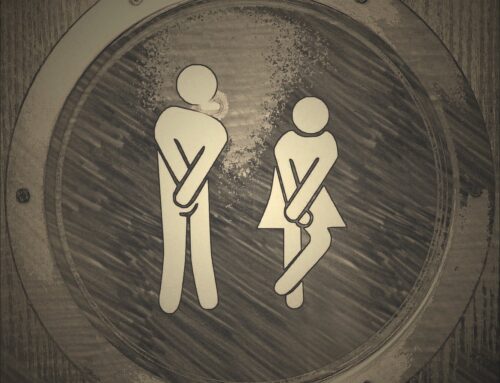53% of women between the ages of 20-80 years old experience urinary incontinence (the inability to control the bladder) at some point in their lives (Culligan &Heit, 2000). Less than half of these women do not even mention it to their physician (Burgio, 1994) perhaps because they are too embarrassed, or simply because they think it is normal to experience ‘a bit of leakage’ when they sneeze or laugh. Or, that it is normal after pregnancy or with age. Or, that it is normal because their mom, sister, and best friend all experience a ‘bit of leakage’ too. But it is not normal. Yes, it is common, but not normal. Urinary incontinence can be prevented and treated in most cases.
The two main types of urinary incontinence are stress and urge. It is important to know the difference between the two, and know which one you may have, in order to treat it accurately. However, it is common to have a combination of the two as well.
Stress incontinence is what occurs when the pelvic floor muscles(PFM’s) are unable to stop the flow of urine during actions that put pressure or stress on the bladder, such as coughing, sneezing, laughing, twisting, or lifting. PFM function can be affected because of childbirth or even from low estrogen levels, such as during menstruation or menopause. Other factors that influence PFM function can be found HERE.
Urge incontinence is when there is a sudden ‘urge’ to urinate with an inability to control the bladder. This can happen when the pelvic floor muscles are chronically tense to the point of fatigue, and consequently give out at inappropriate times. If the PFM’s are consistently tense, without knowing how to relax, release, and control them, other problems in addition to urge incontinence can arise like low back pain, irritable bowel syndrome, interstitial cystitis, and painful intercourse.
Many people believe that the popular Kegel exercises which consist of ‘squeezing’ the PFM’s will solve the leakage problems. However, this is not necessarily the case. If your incontinence is due to chronically tensed PFM’s that are fatiguing (urge incontinence), then simply performing Kegel exercises may actually be worsening your problem! Learning how to release your PFM’s in conjunction with diaphragmatic breathing might actually be more beneficial for someone with urge incontinence. If your incontinence is PFM weakness due to muscle damage during trauma (childbirth or sexual trauma) or the PFMs are being inadequately activated, then correctly prescribed Kegel exercises by a pelvic floor physiotherapist can help. But Kegel exercises do not address all of the muscles that are important for a healthy pelvic floor. Kegels are still only a small part of the overall treatment of this dysfunction.
Treatment of incontinence may begin by learning how to activate, release, and control the PFM’s. PFM training with a physiotherapist has been recommended for women suffering from stress urinary incontinence and for prevention of urinary incontinence during pregnancy and after delivery (Britnell, et al 2005). Successful physiotherapy treatment protocols also include hip adductor and deep abdominal muscle strengthening, lumbar or core stability training, and prescription of exercises that address posture or hip tightness that may be contributing to pelvic floor function. Education regarding bladder irritants in the diet can also be included in your treatment plan.
Yoga and Pilates have also been shown to improve both types of incontinence due to their ability to address the above areas.
A physical therapist trained in this area will be able to help diagnose which type of incontinence you may have, and help develop an appropriate treatment plan. Treatment need not be invasive and usually consists of 4 to 6 visits. The assessment typically consists of a series of questions followed by a physical examination of postural alignment, hip, pelvis and abdominal strength and flexibility testing. Although incontinence is common, it can be treated. So whether you are a new mom or a retiree, you can still continue to enjoy a healthy lifestyle knowing you have confidence in controlling your bladder!
I have created video practices that you can DOWNLOAD online to help optimize pelvic floor function and health through a combination of physical therapy exercises and yoga breathing, meditation, awareness and movement methods.
To view the 4 min trailer and to download the videos CLICK HERE
My online course, “PhysioYoga & The Pelvic Floor” is now available through Embodia Academy HERE
**This article is not intended to act as medical advice, nor to diagnose or replace your current treatment. Please seek clearance and guidance from your licensed healthcare professional prior to participating in any of the tips, advice, practices or movements mentioned in this article.




